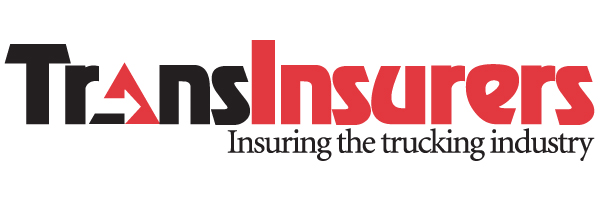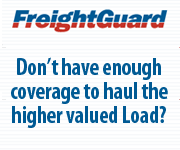address 6520 Sanford Springs Cove, Midlothian, VA 23112
Factors that Determine Insurance Premiums
How is insurance pricing determined? When purchasing truck insurance it is important to understand how your premiums are determined. This is especially important for the new entrant or someone who is starting his or her own trucking business. You pay your premium before either you or your insurance company knows if you will have a loss, or how big the loss might be. That is why the insurance company considers a number of factors that can increase or decrease the probability that a loss will occur, and the potential size of the loss.
We will ask you a number of questions about your company like years in business, accident record, where you drive, what you haul, and the number and type of equipment you operate. You will also be asked about your drivers, their ages, years employed and their driving records. It is important that you have this information available and that it is accurate to the best of your knowledge
Understanding the Factors Involved
Driver Age
As a general rule, younger drivers are involved in more accidents than older drivers and that is why younger drivers will usually pay more for insurance coverage. Younger drivers who have experience driving a tractor-trailer are still more likely to have a loss than a more mature driver. The more years a person drives, the lower the probability that a driver will have a loss. However, after reaching a certain age, the likelihood of accidents again increases and the rates will generally begin to rise.
Years of Driving Experience
The more experience a driver has on the same type of equipment, the less likely he or she is to be involved in losses. As a driver gains experience with a specific type of equipment, the more he or she understands how it will react under certain driving conditions and the better he or she will be able to avoid losses. This experience factor will generally result in reduced rates, especially if the experience is gained in the same type of truck.
Changes in the use of the type of equipment will increase the chances that the driver will be involved in a loss. For example, experience driving a straight truck does not translate to lower loss potential when the driver switches to a tractor-trailer.
Years Employed
The number of years a driver is employed is another factor often taken into consideration when determining insurance premiums. In addition to the usual pressures of the job, a new driver is also faced with learning new routes and customers. These additional pressures on a new driver often result in a significantly higher accident rate. The more familiar a driver is with the particular routes, equipment, and commodities hauled, the less likely the driver is to be involved in a loss.
Owner-Operators operating on contract will also be more familiar with the routes and customers than those operating exclusively with brokered loads.
Driving Record
A driver's state motor vehicle record (MVR) plays a crucial role in determining what the insurance premiums will be. It is the most basic evaluation of a driver and likely one of the first pieces of information reviewed by the agent or underwriter. If a driver has moving violations on his or her record (driving your commercial auto or personal vehicle), then they will pay more for insurance coverage. Statistics indicate that drivers with violations usually have repeat violations, which often lead to accidents. Having a copy of the driver's MVR available when talking to the insurance agent will make getting a good quote easier for everyone involved.
Accidents
Accidents have a direct impact on the insurance rate. If the driver has been involved in an accident you will pay more for insurance coverage. As with moving violations, statistical data indicates drivers with an accident on their record are more likely to be involved in another.
Years Operating Under the Same Name
The insurance agent may ask about previous insurance coverage. This may include asking for a loss history from your previous insurance carrier. If you have had insurance cancelled for non-payment of premium or underwriting reasons, insurers want to know. As with newly employed drivers, an entity that is operating under a new name is more likely to have the added burdens of management development associated with the new operation. As a company becomes more experienced managing its operation; which includes a solid safety program, finding and recruiting good drivers, and following government regulations; the frequency of losses is also likely to decrease.
Where the Company Operates
Depending on where the company hauls freight, the vulnerability to different types of losses can vary greatly. This is based on a number of factors including the road infrastructure, level of congestion, legal environment and the percentage and experience of travel to a particular region.
For example, you would be more likely to experience higher rates if you were regularly traveling into or through larger metropolitan areas (New York City is a good example) than if you traveled only within smaller cities in the Midwest.
What is Hauled
The purpose of cargo insurance is to protect the cargo owner's financial interests while the cargo is exposed to potential damage while in transit. The type and value of the cargo affects the insurance premiums paid, in addition to a number of other factors such as the time sensitivity of the load, the potential for theft and the impact of changes in temperature. Some commodities are more susceptible to certain perils than others. The underwriter when determining a rate for cargo insurance considers all of these factors. Many times insurance companies place exclusions in cargo policies because of the loss record of certain commodities. Be sure to ask about exclusions.
Type of Equipment Operated
Modern tractor-trailers are much more complex than their predecessors. This makes the price to repair or replace the vehicle very expensive when they are involved in an accident or stolen. In addition, the condition of the equipment can contribute directly to the chances the vehicle will be involved in a loss. So, when determining a rate, the underwriter will take factors such as the value, age and condition of equipment into consideration.
Policy Deductibles
A deductible is the amount of each claim the insured agrees to pay. The insurer will pay the difference between the claim amount and the deductible. For example, if the claim is $5,000 and the deductible is $1,000, the insurance company will pay $4,000. Generally by raising the deductible, the premium will be lower.
Insurance is designed to protect against financial catastrophes, not smaller expenses that the insured can afford to pay. Consider increasing your deductible to reduce your insurance premiums, especially if you can afford a higher deductible.
Safety Record with the FMCSA
Insurance companies routinely look at the FMCSA safety records of motor carriers to better understand how well a company complies with the safety regulations. This includes looking at a company's:
- Safety rating in the Safer System
- Roadside vehicle and driver out-of-service violations
- SafeStat and Inspection and Selection (ISS-2) scores
- FMCSA-recordable accidents
- Results from past FMCSA compliance reviews and whether any enforcement action has been taken against the carrier
A company with a Satisfactory FMCSA safety rating, lower than average out-of-service violation rates, and a favorable inspection history will be viewed as a more favorable risk than a company with the opposite profile.
Information about your company's DOT safety record is available on the Internet at:
- SaferSys Company Snapshot: http://www.safersys.org/CompanySnapshot.aspx
- SafeStat: http://www.safersys.org/
Company Safety Program
Most insurance companies consider compliance with FMCSA regulations a minimum requirement, and expect even small companies and owner-operators to meet those requirements. As fleets grow, insurance underwriters expect companies to have safety programs that go beyond the minimum requirements. A small fleet with ten trucks, for example, should have at least a basic safety program that includes written policies and procedures that address key safety areas, such as:
- Driver hiring and qualification
- Safety training
- Driver supervision
- Vehicle inspection and maintenance
- Drug and alcohol testing
- Accident investigation and reporting
- DOT compliance

